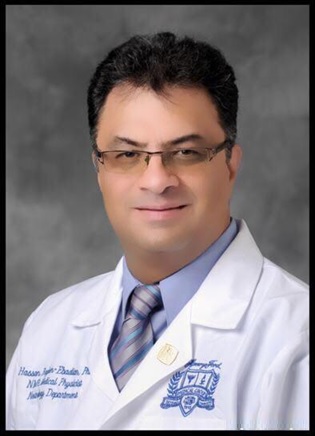Program Information
Maximum Likelihood and Nested Model Selection Techniques for Pharmacokinetic Analysis of Dynamic Contrast Enhanced MRI in Patients with Glioblastoma Tumors
H Bagher-Ebadian1*, A Dehkordi2 , J Ewing3 , (1) Henry Ford Health System, Detroit, MI, (2) Shahid Beheshti University, Tehran, Tehran, (3) Henry Ford Hospital, Detroit, Michigan
Presentations
SU-F-I-26 (Sunday, July 31, 2016) 3:00 PM - 6:00 PM Room: Exhibit Hall
Purpose: This pilot study introduces a novel approach for estimation of pharmacokinetic parameters in dynamic contrast enhanced magnetic resonance imaging (DCE-MRI). In this study Maximum Likelihood (ML) and Nested Model Selection (NMS) techniques are combined to construct an approximately unbiased estimator for DCE-MRI data analysis.
Methods: DCE T1-weighted MRI using the contrast agent (CA) gadopentetate dimeglumine was performed on 20 patients with Glioblastoma tumor. ML Estimation (MLE) technique was recruited for optimizing 3 physiologically nested models constructed based on the extended Tofts model in the course of DCE-MRI experimental. The Log-Likelihood-Ratio (LLR) measures for three nested models were used to choose the best model explaining the variation of the experimental DCE-MRI data and to estimate its Pharmacokinetic (PK) parameters. The observed information matrix or the matrix of Log-Likelihood was used to estimate the variance and co-variance of the estimated PK parameters for each of selected models.
Results: The PK parameters along with the model choice maps estimated by the MLE and NMS are highly in agreement with the physiological condition of underlying pathology and the values for the permeability parameters of the brain reported by the literature. The low variance and covariance measures of the estimated PK parameters being reasonably in-range imply that the proposed estimator is robust for estimation of physiological parameters in DCE-MRI studies.
Conclusion: This pilot study confirms that only three parameters of the standard model are sufficient to fit the most complicated time trace of CA concentration in DCE-T1 weighted studies for GBM tumors under the conditions of the experiment.
Funding Support, Disclosures, and Conflict of Interest: This study is supported in part by Dykstra Family (F60570) and mentored grants (A10237)
Contact Email:

